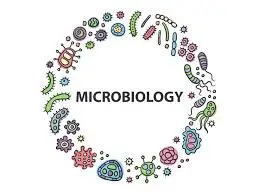
Introduction
Introduction and history of microbiology ek aisi branch hai microbiology ki jo un microorganisms ka study karti hai jo human diseases cause karte hain — jaise ki bacteria, viruses, fungi, aur parasites.
Iska focus hota hai:
-
Pathogens ka structure aur life cycle samajhne par
-
Disease mechanism (bimari kis tarah failti hai)
-
Diagnosis (pata lagana), treatment aur prevention par
Medical microbiologists hospitals ke clinical labs mein kaam karte hain jahan wo infection causing germs ko identify karte hain, disease outbreaks ko monitor karte hain, aur sahi treatment recommend karte hain.
Ye log vaccines, antibiotics, aur naye therapies develop karne mein bhi important role play karte hain.
Brief History of Medical Microbiology
🔹 Prachin Yug (Ancient Times)
Tab diseases ka reason supernatural forces ya ‘buri hawa’ (miasma) ko maana jaata tha. Treatment mein jari-bootiyan, isolation aur safai ka use hota tha.
🔹 17th Century – Microorganisms ki Discovery
-
Antonie van Leeuwenhoek (1676): Pehli baar microscope se microorganisms dekhe — jinko unhone “animalcules” bola.
🔹 19th Century – Germ Theory of Disease
-
Louis Pasteur (1857–60s): Prove kiya ki microbes fermentation aur diseases ka reason hain. Pasteurization aur rabies vaccine banaye.
-
Robert Koch (1876): Anthrax ka bacteria (Bacillus anthracis) identify kiya. Koch’s postulates diye — kisi microbe ko disease se link karne ke rules. TB aur cholera ke bacteria bhi discover kiye.
🔹 Late 19th to Early 20th Century – Golden Age
-
Paul Ehrlich (1909): “Selective toxicity” ka concept diya aur syphilis ke liye pehla drug (Salvarsan) banaya.
-
Alexander Fleming (1928): Penicillin discover kiya — pehla antibiotic.
🔹 20th Century – Vaccination aur Virology
-
Smallpox, polio, measles jaise diseases ke vaccines aaye.
-
Streptomycin, tetracycline jaise antibiotics develop hue.
-
Viruses aur antiviral therapy ka in-depth study start hua.
🔹 Late 20th – 21st Century
-
Molecular biology (e.g., PCR) ne rapid diagnosis aur genetic manipulation allow kiya.
-
Antibiotic resistance (e.g., MRSA, MDR-TB) serious problem ban gayi.
-
HIV/AIDS, Ebola, COVID-19 jaise global outbreaks ne microbiology ki importance dikhaayi.
Medical Laboratory ka Itihaas (History of Medical Labs)
🔹 Early Clinical Labs
-
19th century mein, basic labs hospitals mein shuru hue.
-
Blood, urine, tissue samples ka analysis shuru hua.
🔹 Diagnostic Techniques ka Vikas
-
Gram stain (1884) ne bacteria ko Gram-positive aur Gram-negative mein divide karna possible banaya.
🔹 20th Century Growth
-
Specialized labs (microbiology, hematology, biochemistry) bane.
-
Automated analyzers aur biochemical tests aaye.
🔹 Modern Labs
-
Genomics, proteomics, automation jaise advanced tools use hote hain.
-
PCR, NGS, mass spectrometry jaise molecular tools se pathogens jaldi identify kiye jaate hain.
Importance of Medical Microbiology Laboratory
-
Accurate Diagnosis:
Bimari ka exact reason (bacteria, virus, fungus, etc.) pata lagta hai → proper treatment milta hai. -
Targeted Treatment:
Antibiotic sensitivity testing se doctor sahi dawa chunte hain. -
Infection Control & Epidemiology:
Labs outbreaks ko detect karte hain, spread ko rokne ke measures suggest karte hain. -
Antimicrobial Resistance Monitoring:
MRSA, MDR-TB jaise resistant strains ko identify karke treatment plan adjust karte hain. -
Public Health Surveillance:
Emerging infections (e.g., COVID-19) ka tracking karte hain. -
Clinical Research & Vaccine Development:
Labs new vaccines aur therapies banane mein support karte hain. -
Bioterrorism Response:
Anthrax jaise dangerous agents ko detect karne mein labs kaafi important hain. -
Quality Control in Healthcare:
Accurate lab results se misdiagnosis aur extra treatment avoid hote hain. -
Education & Training:
Labs students aur healthcare workers ko training dete hain. -
Pandemic Preparedness:
Labs testing aur surveillance mein key role play karte hain.
Classification of Microbes
| Microbe Type | Details | Examples |
|---|---|---|
| Bacteria | Single-celled prokaryotes, Gram +ve/-ve | E. coli, Mycobacterium tuberculosis |
| Viruses | DNA ya RNA genome, protein coat | HIV, SARS-CoV-2 |
| Fungi | Eukaryotic, yeast/mold | Candida albicans, Aspergillus |
| Parasites | Protozoa, helminths, ectoparasites | Plasmodium, Ascaris, lice |
| Prions | Sirf proteins, no nucleic acid | CJD |
Normal Flora vs. Pathogens
| Normal Flora | Pathogens |
|---|---|
| Body ke andar balance banaye rakhte hain | Disease cause karte hain |
| Immune system ko stimulate karte hain | Immune system ko bypass kar sakte hain |
| Example: Lactobacillus | Example: Salmonella |
Pathogenesis of Infection
a) Infection ke Steps
-
Entry (via air, food)
-
Host cells se chipakna (adhesion)
-
Invasion & immune system se bachna
-
Toxin banana
-
Tissue damage aur spread
b) Virulence Factors
-
Capsule: Phagocytosis se bachav
-
Enzymes: Coagulase, hyaluronidase
-
Toxins: Botulinum, diphtheria toxin
-
Antigenic variation: e.g., HIV
Host Defenses
a) Innate Immunity
-
Skin, mucus (physical)
-
Lysozyme (chemical)
-
Neutrophils, macrophages
-
Inflammation, fever
b) Adaptive Immunity
-
B cells: Antibody production
-
T cells: Cell killing
-
Memory cells: Re-infection se protection
Laboratory Diagnosis
a) Sample Collection
-
Sahi sample, sahi time par lena zaroori hai.
b) Direct Detection
-
Gram stain, AFB stain
-
ELISA, PCR
c) Culture
-
Aerobic/anaerobic
-
Selective/differential media
d) Serological Tests
-
IgM, IgG antibody tests
-
Paired sera
e) Antibiotic Sensitivity
-
Disc diffusion (Kirby-Bauer)
-
MIC, E-test
Prevention & Control
-
Vaccines: MMR, DPT, COVID-19
-
Chemoprophylaxis: Cotrimoxazole
-
Disinfection, Sterilization
-
Infection control: Hand hygiene, PPE, isolation, antibiotic stewardship
Emerging Issues
-
AMR (Antimicrobial Resistance): MRSA, XDR-TB
-
Zoonoses: Nipah, Ebola
-
Bioterrorism: Anthrax
-
Pandemics: COVID-19 jaisi situations mein rapid diagnosis zaroori hai.
Future Trends
-
PCR & CRISPR based diagnostics
-
Whole genome sequencing
-
AI-based tools for pathogen detection
-
Microbiome research: Gut-brain axis ke connection ka study